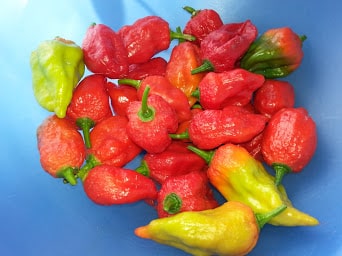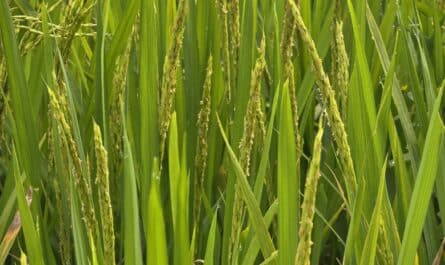In farming, the only certainty is, if something can go wrong, it will!
After the last dismal harvest, we were rather pleased when we surveyed our farm this year. Our lush green fields, fragrant with three rice varieties – Indrayani, Ambemohar and Black Rice, delicate Barnyard Millet (varai/sama), and nutritious Finger Millet (nachni/ragi), promised a respectable harvest. Nothing close to the several hundred quintals the grain merchant had predicted, but a more sober 60-to-80 kilos of each crop.
It was decided that we would first harvest and thresh the Indrayani rice. Then the black rice. Followed by the varai, the Ambemohar rice, and finally the nachni.
Bandra Rose and I made plans to pack Diwali hampers with our three varieties of rice, nachni flour, and sama and sell them through our social media handles. The proceeds from these sales would support the various activities we undertake for our neighbouring Adivasi village, especially the little kids there.
But to misquote Robert Burns, “the best-laid plans of mice and women often go awry”.
After the Indrayani rice was harvested and threshed, it was time for the black rice. Everything was going according to plan. The sacks of black rice were taken down to the rice mill, and Grim S and the Imp watched as the sacks were emptied into the threshing machine. It was when they returned to the mill a few hours later to collect the rice that we met our first massive speed bump. To their horror, our 70 kg of black rice was liberally sprinkled with almost 15kg of unidentified white rice. After a moment of shock, a few distressed calls to us, and I am assuming a face off at the rice mill, a postmortem was conducted. This revealed that the men running the threshing machine had added our black rice to the machine without first emptying the white rice from the previous milling.
This was a disaster.
We could not, under any circumstances, distribute or sell this as ‘Black Rice’. In each 1 kilo bag of ‘Black Rice’, we would effectively have 105 g of unidentified white rice.
We drove to the farm early the next morning and were dismayed to see the beautiful black rice with clear-to-the-eye white speckles. Diwali was fast approaching, and there was no way this rice could be manually cleaned in a matter of days. To separate the black from the white would require countless hours and over a dozen people! Our great plan to distribute Diwali hampers of three varieties of rice was fast fading. In the end, it took several months, over a dozen people, much complaining, and general unhappiness before we had about 50 kilos of barely acceptable ‘Black Rice’. A proper disaster!
And it was not just the Diwali hampers that were affected. Our friendly neighbourhood grocer had offered to buy as many packets of black rice as we could spare and promised to pay us a premium as he had a high demand for good-quality, organic black rice. But, seeing our speckled rice, he demurred and said he could not sell it. Our threshing mill mistake caused not just a loss of face but a direct financial loss.
Shrugging off our disappointment, we turned our attention to the rest of the harvest. After the varai was harvested and put out to dry, we faced a new problem. Unseasonal rain! We had to scamper around to harvest the nachni and Ambemohar. And as always, when we needed it most, labour was in short supply. All of us pitched in to save the rest of the harvest. While the Ambemohar was harvested and rushed down to the (infamous) rice mill, several metres of thick tarpaulin were used to protect the harvested nachni from the rain. The rain, though, wasn’t our only problem. The freshly harvested nachni was an open invitation to all the mice in Raigad, so the Imp had to watch it carefully. The sky remained overcast for days, and it was almost a fortnight later that we could get the nachni ground into flour.
We were finally able to distribute our produce to family and friends in a piecemeal manner weeks after Diwali—one variety at a time.
Having said that, our Ambemohar and Indrayani made up in taste and flavour what they lacked in quantity. They truly were very special. The Ambemohar was short-grained, fragrant, and had a great texture when cooked. And the Indrayani was simply heavenly. Slightly sticky with an amazing flavour. Several people said they could eat a bowlful of our Indrayani rice with just a dollop of ghee.
The black rice, though, could never be completely cleaned, and even after months of sorting, we still had the odd white rice in every handful.
At a solemn farm meeting after all the produce had been packed and distributed, we decided we would give the black rice a miss the following year as we had no control over the rice mill and no guarantees we wouldn’t end up with a similar disaster.
Our other conversation, however, was far more serious. Unlike the previous year, when all of the farmers surrounding us planted and harvested their paddy fields at the same time and we all assisted each other with labour, shared ploughs, shared meals, shared songs, and much camaraderie, this year ours were the only paddy fields sown for kilometres around.
There were many reasons for this. In no particular order and not a comprehensive list by any stretch, these are:
1) Rice cultivation is labour-intensive.
2) Labour is expensive and not easily available.
3) Vagaries of the monsoon.
4) Climate change.
5) Mass migration of the younger generation to cities.
6) Lack of marketing and storage facilities.
7) Increased cost of seeds and fertilizer.
8) Land degradation.
9) Not enough income for everyone in the household.
My guess is that a combination of all these has resulted in small farmers deciding not to till their land and searching for alternate sources of income. Bear in mind that the balance between harvest and hunger is so carefully weighed that a brief, unseasonal rain can cause starvation.
Farming is hard. Farming is expensive. Disease, pestilence, drought, unseasonal rain, and many other factors can devastate an entire crop in the blink of an eye. Government schemes, though well-intentioned, rarely trickle down to small farmers. And the cost-benefit analysis of tilling small farms does not add up. Farmer distress is real.
We need a macro-level agricultural overhaul, which includes improving land records, investing in research and development, providing local rural non-farm employment opportunities, and building better rural infrastructure. I really don’t see any of this happening anytime soon.
We are, of course, keenly aware of the irony of the Two Bandra Girls (with deepish pockets) tilling the land while traditional farmers distance themselves from the land they have tilled for generations.




Sad that farmers children have migrated to cities.
They prefer a steady wage compared to vagaries of farming.
Happening in a lot of countries.
Very very Insightful read .. black rice episode was crazy and disastrous .
My heart would have sunk..
We have done farming on back land of our bungalow in Nagpur …Rice , Tur and Wheat ..and had different kind of episodes where at times good harvest got spoilt due to unseasonal rains etc and that would be upset us for days.
This was different and something I have not come across ..going was good for black rice and none could not have anticipated anything going
awry at last step .
With so much more effort and love put into it so am sure must hv been very tough for you all.
The farming challenges and the ground reality highlighted are so very important for every urban who are interested and fancy farming or find it glam …
Thanks for reading and appreciating. Yes, farming is hard. Nothing glamourous about it at all. And profits (if any) are a distant dream. But no regrets at all.
I wish you both better luck in the future. I grew up in a small subsistence type village where we only had 35 acres to farm & feed 6 of us, kept sheep and goats, did the ploughing using a wooden plough with 1 ox & fertilised the soil only with animal & human waste, depending on the vagaries of the weather for irrigation & threshing by hand etc, milling using stones, etc. I feel and am proud of all of you.